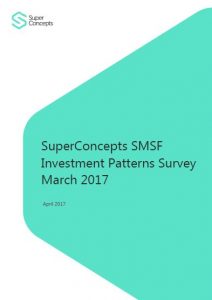
SMSF Investment Patterns Survey, March 2017
In the March 2017 quarter, the average benefit payment increased significantly from $16,256 to $27,900. Overall contribution levels also continued to rise, a reversal of the historical trend where Q1 was always the lowest quarter each year.
The findings demonstrate that SMSF trustees were looking to maximise current non-concessional contribution rules. The $180,000 after-tax contributions cap, and the three year $540,000 bring-forward rule, remains until 30 June 2017. Trustees are using withdraw and re-contribution strategies to make non-concessional contributions into an accumulation account, start a new 100% tax-free pension and make contributions to a spouse to try and equalise member balances and maximise access to the $1.6 million pension transfer balance cap for both persons before July 1.
During prior quarters the split of lump sum withdrawals versus pension payments tended to be around 20% versus 80%. In the first quarter of 2017 the split shifted to 40% versus 60%. However, asset allocations largely remained unchanged as SMSF trustees and their advisers focus on dealing with the opportunities around the upcoming changes.
This survey covers approximately 2,750 funds, a sample of SMSFs administered by Multiport (part of the SuperConcepts group).